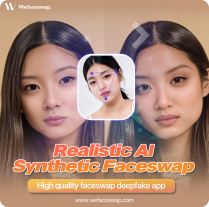The Evolution of Face Swap and Its Rising Popularity
The Evolution of Face Swap and Its Rising Popularity
Blog Article
Understanding the Technology Behind Face Swap Features
The change of experience change engineering from a quirky uniqueness to a main-stream tendency is nothing lacking fascinating. Originating as a great filter on early image apps, face trades have today become a built-in element of social networking material development and also professional industries. With its rapid development and climbing recognition, deepfake technology has fascinated thousands worldwide. Platforms like Experience Swap have played a significant role in that phenomenon, providing advanced and revolutionary face changing methods that are easy to use.

Deepswap is really a cutting-edge deep understanding technology that enables for top quality experience swaps with just a couple of clicks. It uses synthetic intelligence (AI) calculations to analyze skin features and effortlessly change them with still another person's. This has opened a full world of creative possibilities, letting consumers to create jaw-dropping visual effects and special content. Let's discover a number of the exciting tasks you possibly can make with Deepswap.
The Early Times of Experience Change
Face swap engineering first seemed in early 2010s with simple photo-editing apps. These early iterations were usually clunky, making funny but glitchy effects that fueled its appeal just as entertainment. People could swap faces with friends, animals, as well as superstars, discussing these entertaining photographs on social networking platforms. While simple, that entry-level engineering opened the door for developers to discover their untapped possible further.
Development Forced by Social Media
Rapidly ahead to the mid-2010s, and the rise of applications like Snapchat and Instagram catapulted face trades into mainstream culture. What was after restricted to static photos was today being altered into real-time video filters. FaceSwap, Snapchat's well-known lens, turned one of its most widely used functions, interesting an incredible number of users daily. Reports suggest that by 2016, around 60% of Snapchat users had attempted its experience change function at least once.
Concurrently, social networking influencers started adopting face trades for content generation, heightening wedding through creativity and humor. That rising trend more cemented the technology's existence in popular culture, going beyond entertainment and emerging as a strong software for storytelling.
Sophisticated Technology and Broader Programs
Today, improvements in artificial intelligence (AI) and machine understanding have increased experience trade methods, creating them more precise and genuine than their predecessors. Deepfake technology presents the cutting-edge region of face trading, permitting hyper-realistic overlays of just one experience onto another. Beyond amusement, professional areas like filmmaking, promotion, and actually virtual training have embraced these innovations.

For example, in 2021, reports indicated that nearly 15% of digital marketers were tinkering with AI-driven movie personalization using sophisticated experience swaps. That shift shows how face swap engineering is crossing in to useful programs, advancing its increasing popularity.
A Trend on the Increase
What makes face swaps evergreen is their supply and adaptability. As a result of mobile-friendly applications driven by AI, everyone can experiment with experience trades without specialized expertise. Whether for lighthearted fun or skilled use, the growth of the engineering suggests continued growth.
From their humble origins as a photo-editing novelty to its modern-day programs in AI and marketing, experience trade engineering has developed remarkably. With more breakthroughs coming, that development is set to keep up its popularity for decades to come.
Report this page